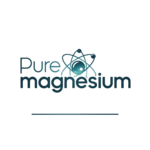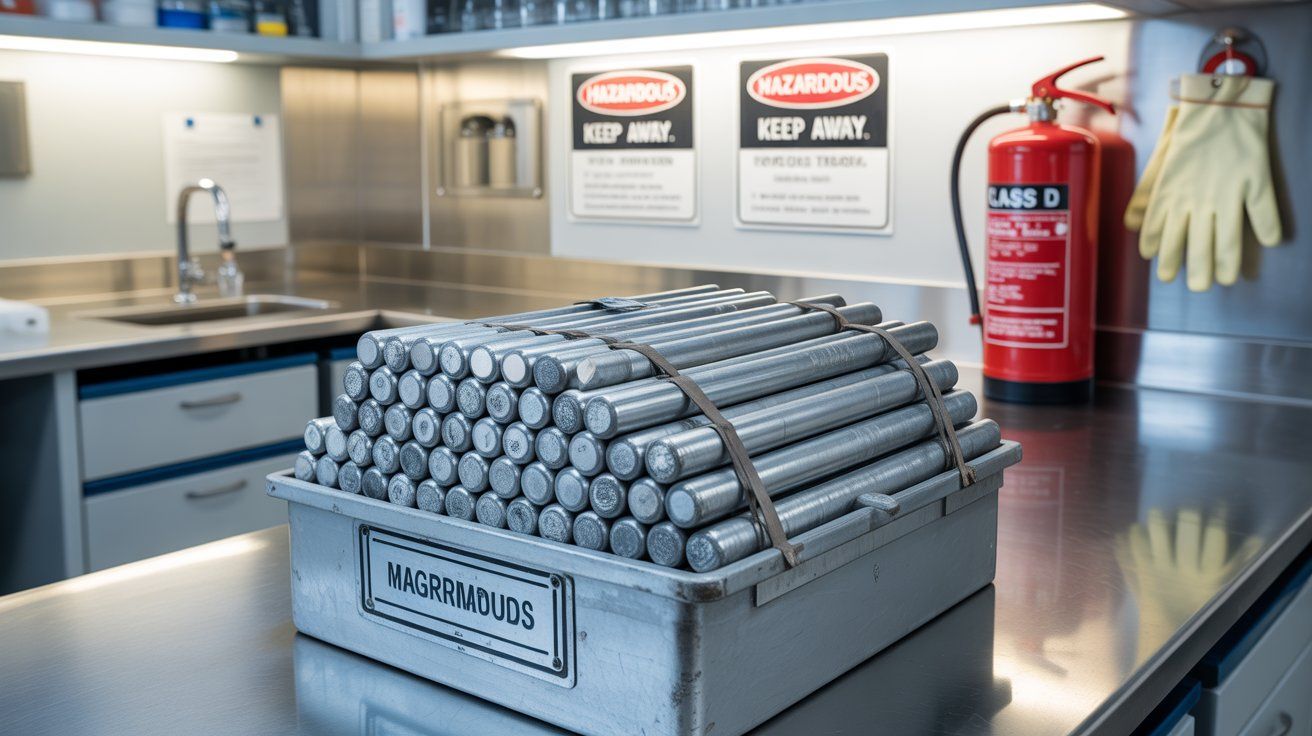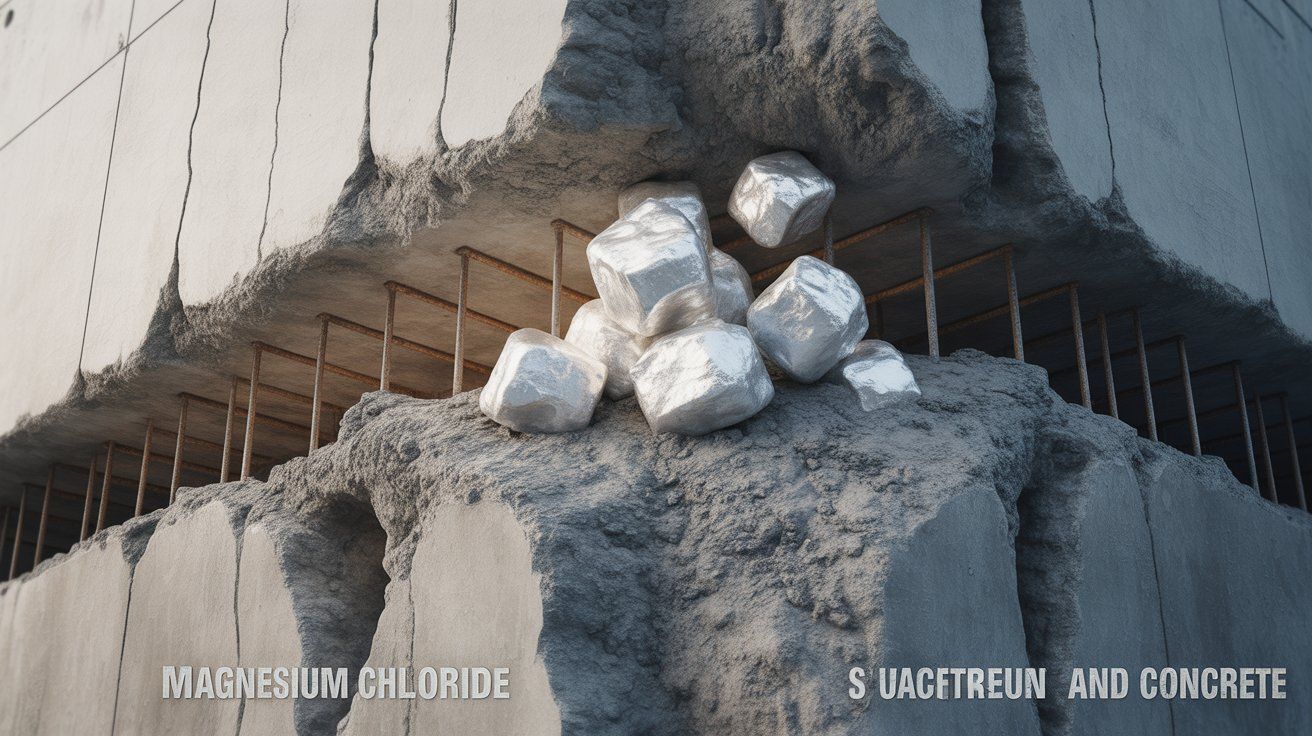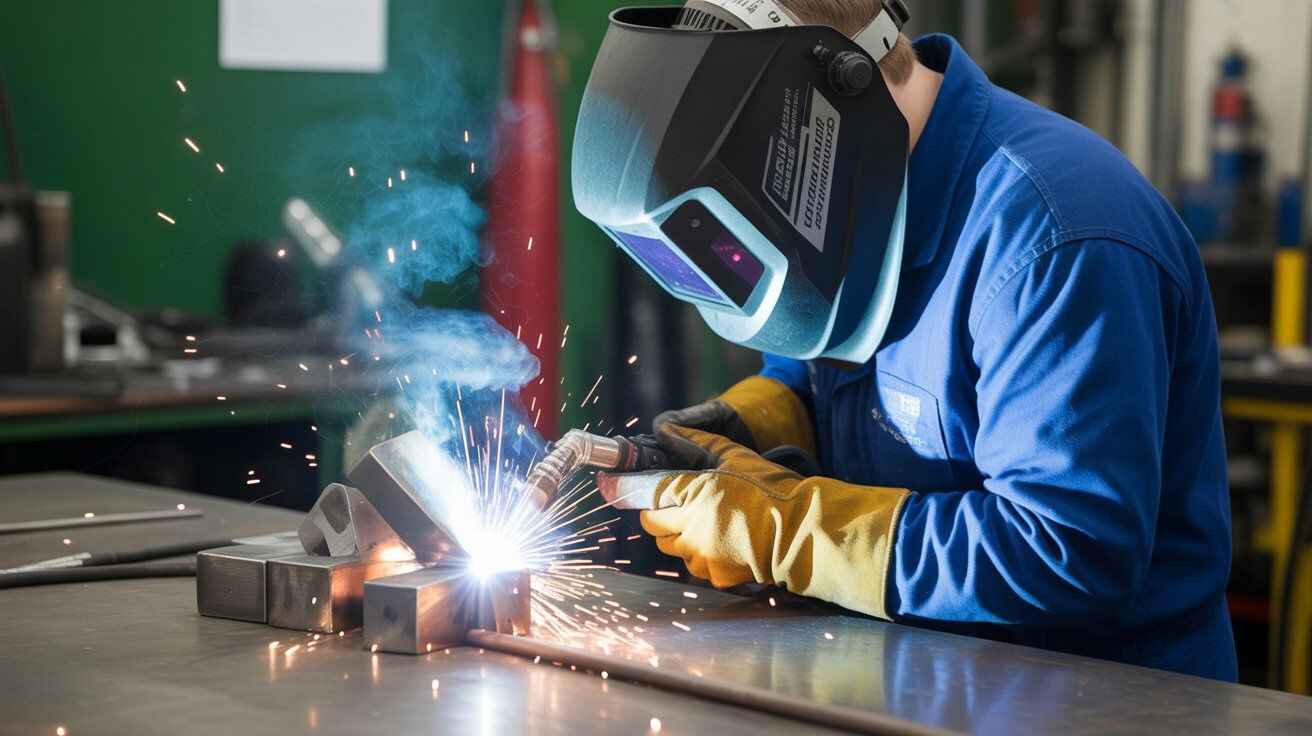Magnesium rods hazardous materials ignite easily, react with water, and release toxic fumes. Safe handling, storage, PPE, disposal, and Class D fire control are vital.
Magnesium rods hazardous materials
Magnesium rods hazardous materials pose unique risks despite their solid appearance. They ignite at extreme temperatures and react dangerously with water, making fire a major concern.
Regulatory SDS sheets highlight dangers such as dust explosions, toxic fumes, and metal fume fever. Proper handling, storage, and transport are essential to protect workers and maintain compliance.
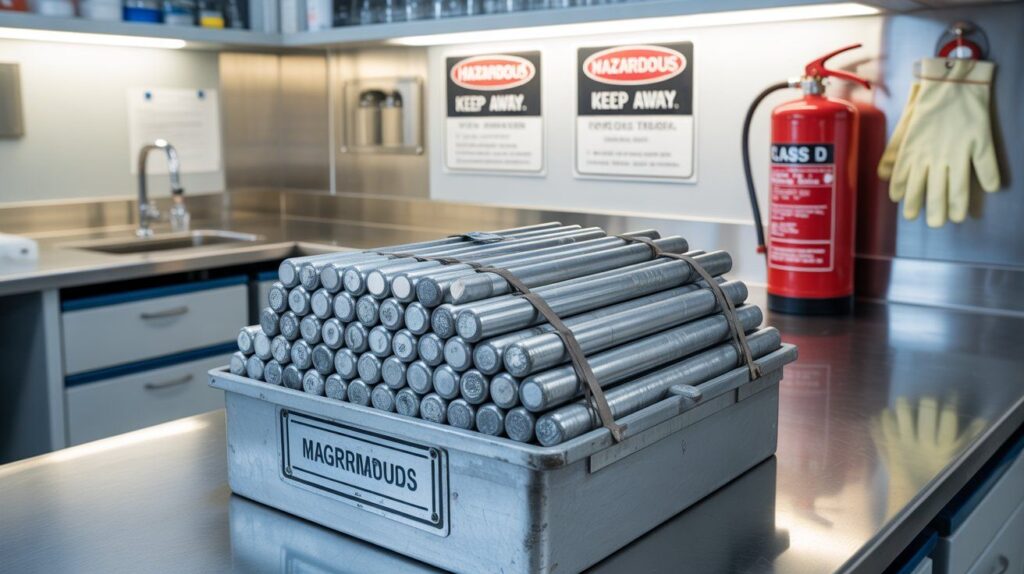
Key hazards of magnesium rods hazardous materials
Magnesium rods hazardous materials present serious fire and reactivity risks. Shavings and dust ignite easily, producing intense heat and bright flames. Burning magnesium reacts violently with water, worsening fires.
Inhalation of magnesium oxide fumes can trigger metal fume fever, while fine dust creates explosion hazards during machining, making strict controls essential for safe use.
Regulatory & transport classification of magnesium rods hazardous materials
| Form | DOT Classification | UN Number | Hazard Class | International Notes (IMDG/IATA) |
|---|---|---|---|---|
| Solid magnesium rods/ingots | Often not DOT-regulated | Not assigned | Not classified as DG | May not require DG handling; still verify carrier rules |
| Magnesium powders/shavings | DOT-regulated hazardous material | UN 1869 | Class 4.1 (Flammable solids) | Classified as Dangerous Goods; stricter rules apply worldwide |
Storage & handling of magnesium rods hazardous materials
Safe handling of magnesium rods hazardous materials requires dry, ventilated storage away from oxidizers and moisture. Dust and shavings must be controlled using collection systems and explosion-proof ventilation.
Machining should use non-sparking tools with grounding and bonding to prevent ignition. Inert atmosphere storage may be needed in high-risk environments to reduce fire and reactivity hazards.
PPE and engineering controls for magnesium rods hazardous materials
Workers handling magnesium rods hazardous materials must wear flame-resistant clothing, gloves, and safety goggles. Respiratory protection is required when dust or fumes are present.
Non-sparking tools and explosion-proof ventilation systems reduce ignition risks.
Engineering controls like dust collection and local exhaust keep airborne particles low, ensuring safer machining, storage, and transport of magnesium rods.
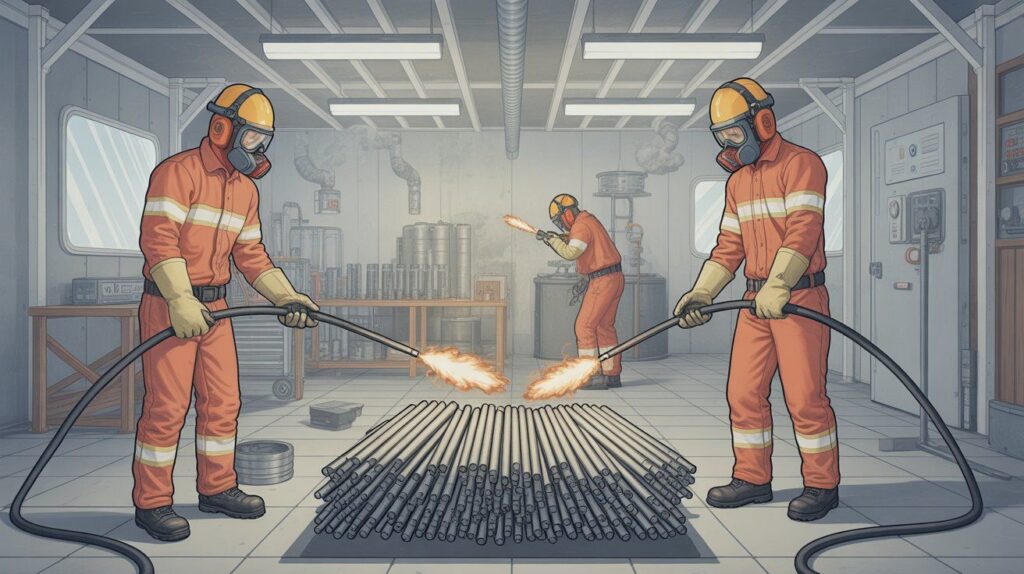
Firefighting & emergency response for magnesium rods hazardous materials
Never use water on burning magnesium rods hazardous materials. Water reacts violently, intensifying flames. Use Class D metal fire extinguishers or dry sand to smother fires safely.
Evacuate the area if large quantities ignite, as magnesium oxide fumes pose inhalation hazards.
Firefighters must wear full protective gear and specialized equipment for combustible metal fires.
Waste, disposal & recycling of magnesium rods hazardous materials
Magnesium rods hazardous materials must be disposed of responsibly. Uncontaminated solid rods can often be recycled as scrap metal, reducing waste.
Dust, shavings, or contaminated material should be treated as hazardous waste and managed through licensed contractors.
Improper disposal increases fire and environmental risks, making compliance with local hazardous waste regulations essential.
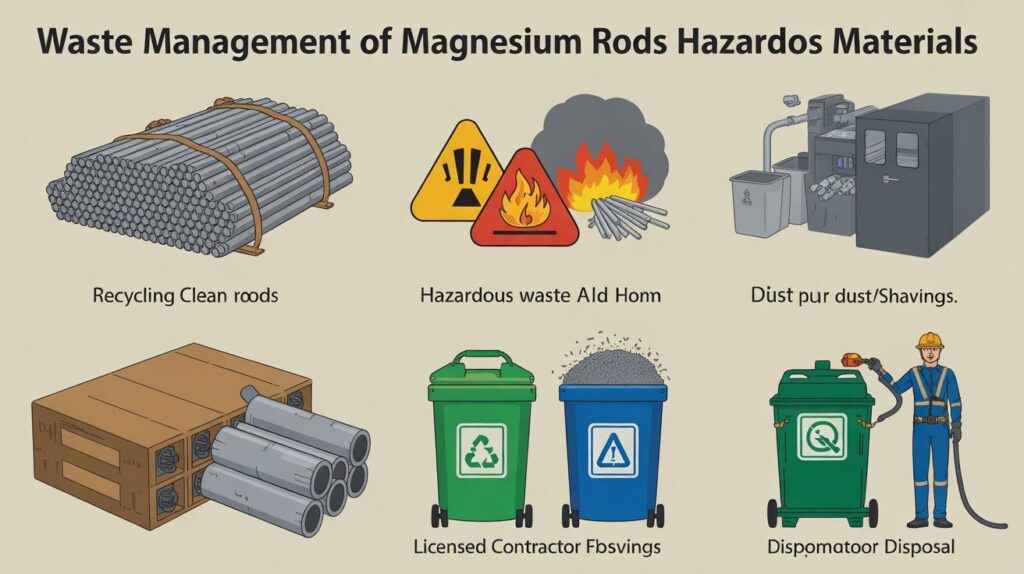
SDS checklist for magnesium rods hazardous materials
Always review the SDS before handling magnesium rods hazardous materials.
Check classification details such as form (rod vs. powder), transport information like UN 1869 or DOT Class 4.1, and incompatible materials. Verify PPE, firefighting methods, and emergency response steps.
Keeping an updated Safety Data Sheet on-site ensures compliance and safer daily operations.
FAQs
Q1: Are magnesium rods hazardous to ship?
Solid rods are usually not regulated under DOT, but powders/shavings are hazardous (Class 4.1, UN 1869). Always confirm with SDS.
Q2: Can I use water to put out a magnesium fire?
No. Water reacts dangerously with burning magnesium. Use a Class D metal fire extinguisher or dry sand.
Q3: What PPE is needed when machining magnesium rods?
Wear flame-resistant clothing, gloves, safety glasses, and a respirator. Use non-sparking tools and explosion-proof ventilation.
Q4: How should magnesium waste be disposed of?
Recycle uncontaminated rods as scrap metal. Handle fines, dust, or contaminated waste as hazardous material per local regulations.
Q5: Why are magnesium rods hazardous materials but alloys less risky?
Pure magnesium rods ignite more easily. Alloys often reduce flammability but still require caution and safe handling.

Hamid Raza, aged 65, is a seasoned expert in nutrition, health supplements, and wellness, with over four decades of experience researching and educating people about essential minerals like magnesium. His work focuses on helping individuals improve energy, bone health, muscle function, and overall wellness through scientifically-backed magnesium knowledge.
Throughout his career, Hamid has contributed to numerous health articles, research studies, and wellness blogs, making complex nutritional science accessible to everyday readers. Passionate about natural health solutions, he guides readers on choosing the right magnesium supplements for optimal health.
